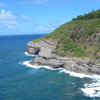I made some infill shoulder planes and I'm not happy with my machinery or procedure for polishing the brass sides. Hopefully someone here can help me improve on the process. I used a 6 x 48 inch woodworking belt sander to grind off the dovetail protrusions and get the sides flat. I was able to work fairly well up through 320 grit but after that I couldn't make any improvement. Using a surface plate and rubbing the planes back and forth will work, of course, but I don't have that long to live. So what is the solution? Different kind of machine? Faster? Slower? Longer? Any help would be appreciated.
Regards,
Bill W.




 Reply With Quote
Reply With Quote
 Please help support the Creek.
Please help support the Creek.
